Urban homesteading is a movement on the rise, with many city-dwelling individuals and families eager to adopt more sustainable, self-sufficient lifestyles. This interest often extends to raising livestock. However, there are several challenges and considerations to keep in mind, from legal regulations to space limitations. So what livestock, if any, can you raise on an urban homestead?

Legal Considerations
First and foremost, before you consider welcoming livestock into your urban homestead, it’s crucial to understand the local laws and regulations. These vary greatly from city to city, with some allowing small livestock like chickens and rabbits, while others may completely prohibit any form of livestock.
To understand your city’s laws, check with your local city or county government, as well as your homeowners’ association, if applicable. The legalities don’t just stop with whether or not you can have animals – there might be specific rules regarding fencing, shelter, noise, and waste disposal.
Find local codes and ordinances for many U.S. cities
Space Limitations
The second significant challenge with urban livestock is space. Unlike rural homesteads, urban properties tend to be more limited in size, which could affect the type and quantity of livestock you can raise. For example, while chickens require relatively little space, larger animals like goats need more room to roam and forage.
Choosing the Right Livestock
Chickens
Arguably the most common choice for urban livestock, chickens offer many benefits to the homesteader while being relatively easy to manage, even in confined spaces.
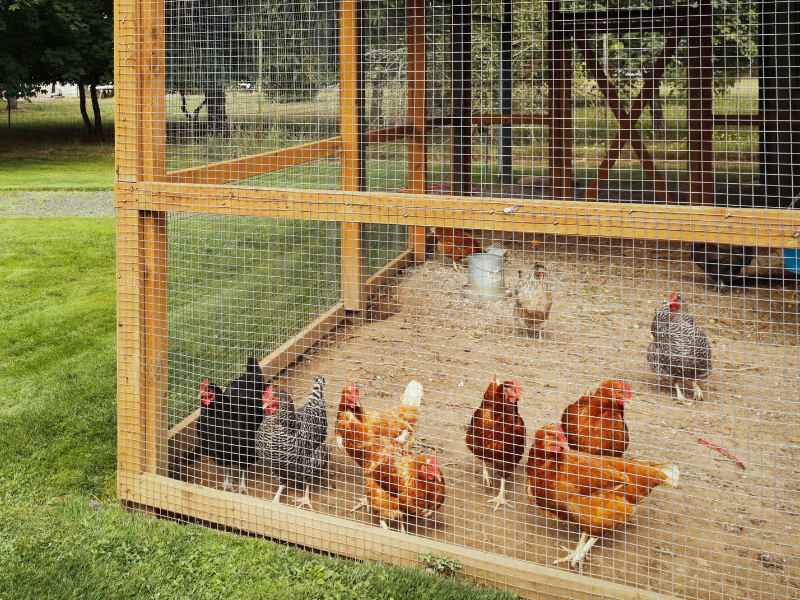
Space and Maintenance
Chickens, especially smaller breeds, do not require a significant amount of space. A rule of thumb is to provide about 10 square feet per chicken in the outdoor run and about 4 square feet per bird in the coop. This relatively compact requirement makes chickens suitable for many urban settings. However, proper housing, including a secure coop for night-time and a run for daytime, is vital to protect them from predators and adverse weather conditions.
Egg and Meat Production
One of the primary reasons urban homesteaders raise chickens is their egg production. A healthy hen can lay anywhere from 200 to 300 eggs per year depending on the breed, providing a regular source of fresh, organic eggs. Breeds like Rhode Island Reds, Leghorns, and Sussex are especially known for their prolific egg-laying abilities.
Chickens can also provide a source of meat. Dual-purpose breeds like Plymouth Rock, Sussex, and Orpington can be raised for both eggs and meat, making them versatile additions to an urban homestead.
Pest Control and Composting
Chickens can also contribute to a homestead beyond their egg and meat production. They are natural foragers and can help control pests in a garden by eating insects, snails, and other pests. Their manure is rich in nitrogen, making it an excellent addition to compost. When managed properly, chickens can help improve soil health and reduce reliance on external pest control and fertilizers.
Noise and Social Considerations
Despite their many benefits, chickens do come with some considerations. Roosters are known for their early morning crowing, which may be an issue in urban settings. Many cities ban roosters for this reason. Hens, however, are generally quieter, though they can sometimes make noise when laying eggs.
Moreover, chickens are social animals and should not be kept individually. A small flock of at least three to four hens is often recommended.
- Damerow, Gail (Author)
- English (Publication Language)
- 424 Pages – 12/26/2017 (Publication Date) – Storey Publishing, LLC (Publisher)
Last update on 2025-07-10 / Affiliate links / Images from Amazon Product Advertising API
With their manageable size, prolific egg production, and benefits for pest control and composting, chickens can be an excellent choice for urban homesteaders. However, it’s important to consider factors such as noise, social needs, and local regulations before deciding to raise chickens.
Rabbits
Rabbits can be a fantastic livestock option for urban homesteaders. They offer many benefits in terms of space requirements, nutritional output, and ease of care, making them a great choice even for those with limited space.
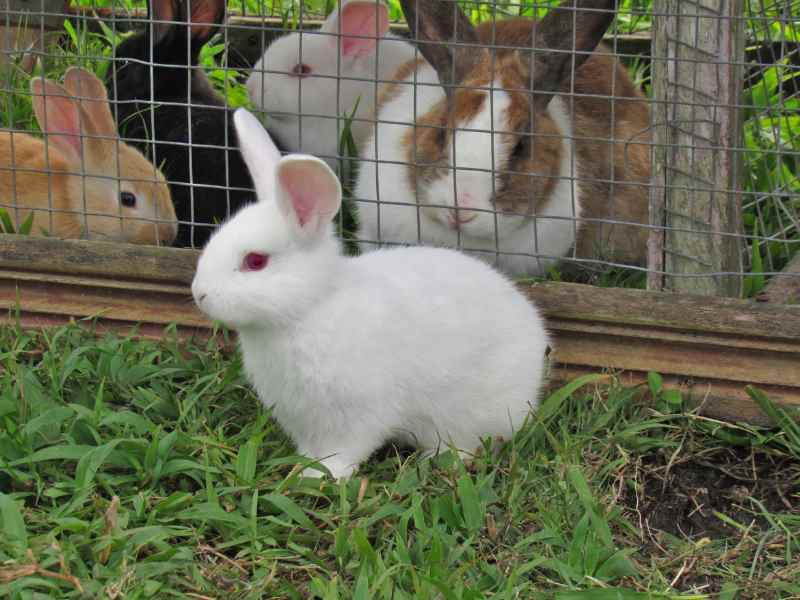
Space and Maintenance
Rabbits require less space than most traditional livestock, which makes them ideal for urban environments. They can be raised in hutches or similar enclosures that can be placed in a backyard, or even on a balcony. These enclosures should provide enough space for rabbits to move freely and must be secured against potential predators. In general, the recommended space per rabbit is about 10 square feet.
Meat and Fur Production
Rabbits are a great source of lean meat, which is high in protein and low in fat. Breeds such as New Zealand White and Californian rabbits are especially known for their meat production. Rabbits can reproduce quickly, with a gestation period of just 28-31 days, and they can have multiple litters in a year, providing a regular supply of meat.
Rabbits also produce fur, which can be used for various purposes such as making clothes or crafts. The Angora rabbit breed, in particular, is known for its high-quality wool.
Manure for Composting and Gardening
Rabbit manure is a fantastic resource for composting and gardening. It is considered a “cold” manure, meaning it can be applied directly to plants without the risk of burning them. It’s rich in nitrogen, phosphorus, and potassium, essential nutrients for plant growth. Regularly cleaning the rabbit’s enclosure can provide a constant supply of this valuable organic fertilizer.
Quiet and Easy to Handle
Rabbits are generally quiet animals, making them a good choice for urban areas where noise might be a concern. They are also relatively easy to handle, making them a good choice for families with children or for those new to raising livestock.
Rabbits can be an excellent choice for urban homesteaders due to their small size, high meat yield, and valuable manure. Their quiet nature and ease of care also make them a viable option for those living in urban areas with limited space or stricter noise regulations.
Coturnix Quail
Coturnix quail, also known as Japanese quail, is another increasingly popular choice for urban homesteaders. There are several compelling reasons to consider this small, resilient bird for urban livestock.

Space and Maintenance
Coturnix quail are particularly well-suited to urban environments because of their small size. A fully grown Coturnix quail is only about the size of a pigeon, which means they need less space compared to chickens or ducks. Additionally, their housing needs are quite straightforward. They can be raised in small, secure coops or aviaries that fit comfortably in a small yard or even on a balcony.
Egg and Meat Production
One of the major advantages of raising Coturnix quail is their egg and meat production. Despite their small size, these quail are prolific egg layers. They can start laying eggs as early as six weeks of age and can produce an egg almost every day. Furthermore, their eggs, although small, are considered a delicacy and are packed with nutrients.
On the meat side, Coturnix quail are ready for harvest much faster than chickens. They reach full size in about eight weeks, providing a quick source of lean, protein-rich meat. Their meat is also considered a delicacy, featuring prominently in many gourmet recipes.
Noise and Impact
Another advantage of Coturnix quail is that they are quiet birds, making them less likely to disturb neighbors. This can be a significant consideration in densely populated urban areas. Moreover, because of their small size and relatively low impact on the environment, they are often overlooked in city regulations, making them a potential option where other forms of livestock are not allowed.
Coturnix quail are an excellent choice for urban homesteaders looking to maximize their space and resource efficiency. They offer high egg and meat production for their size, are quiet and easy to care for, and can often be kept even in cities with stringent livestock regulations.
Ducks
Ducks can be an excellent addition to an urban homestead, offering unique benefits and a bit of diversity to your livestock population. They are known for their hardiness, egg, and meat production, and their contribution to a healthy garden ecosystem.
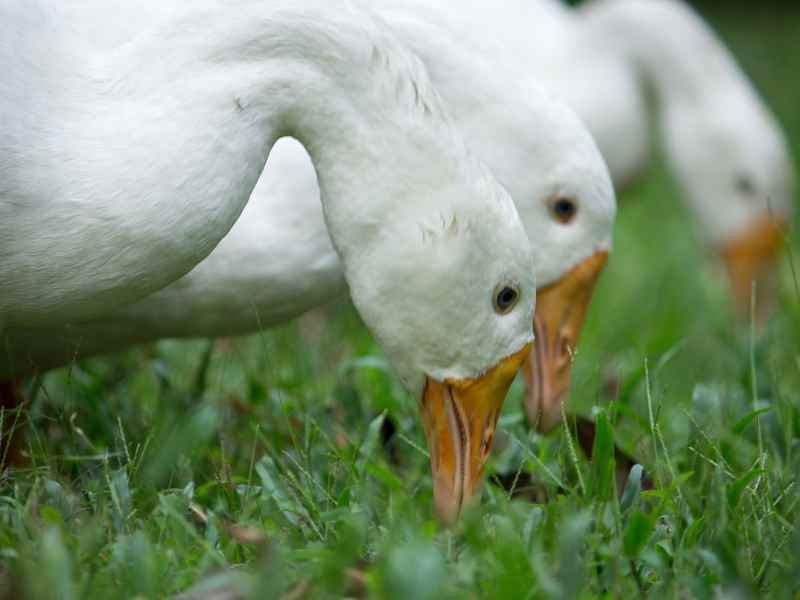
Space and Maintenance
Ducks, like chickens, need a secure coop for night-time rest and protection from predators. However, ducks do not roost like chickens, so their housing needs can be simpler, not requiring perches. They need about 4 square feet per duck in the coop and about 10 square feet in an outdoor run.
Ducks also love water, and while they don’t need a pond, they will appreciate a kiddie pool or a large tub where they can splash around. This water can be subsequently used in the garden, as it is rich in nutrients.
Egg and Meat Production
Ducks are reliable layers, and some breeds can out-lay even the most prolific chicken breeds. Duck eggs are larger than chicken eggs and are often considered more flavorful. They are excellent for baking due to their higher fat content.
In terms of meat production, ducks offer rich, flavorful meat that can be a nice change from chicken. Breeds like Pekin and Muscovy are particularly known for their meat production.
Pest Control and Soil Health
One of the significant advantages of ducks is their love for slugs, snails, and other pests, making them a valuable asset for natural pest control in your garden. They have a ‘dabbling’ nature, which means they will sift through the top layer of soil searching for bugs, while not damaging your plants like chickens might. This also aids in soil aeration and health.
“You don’t have a snail problem, you have a duck deficiency.“
Bill Mollison
Noise and Social Considerations
Ducks tend to be quieter than chickens, especially roosters, making them more suitable for areas where noise might be an issue. However, some breeds are known to be more vocal than others. Ducks are also social animals, and it’s recommended to keep at least two to three ducks for their well-being.
Ducks can be a wonderful choice for an urban homestead, providing egg and meat production, natural pest control, and contributing to soil health. Their needs, in terms of space and maintenance, are reasonably manageable for an urban setting. Understanding their unique characteristics and needs can help homesteaders successfully raise ducks in the city.
Pheasant
Pheasants, while not as commonly considered as chickens or ducks, can be raised on an urban homestead for their meat, eggs, and aesthetic appeal. Raising pheasants can be a unique and rewarding venture, but it does require a good understanding of the birds’ needs and behaviors.
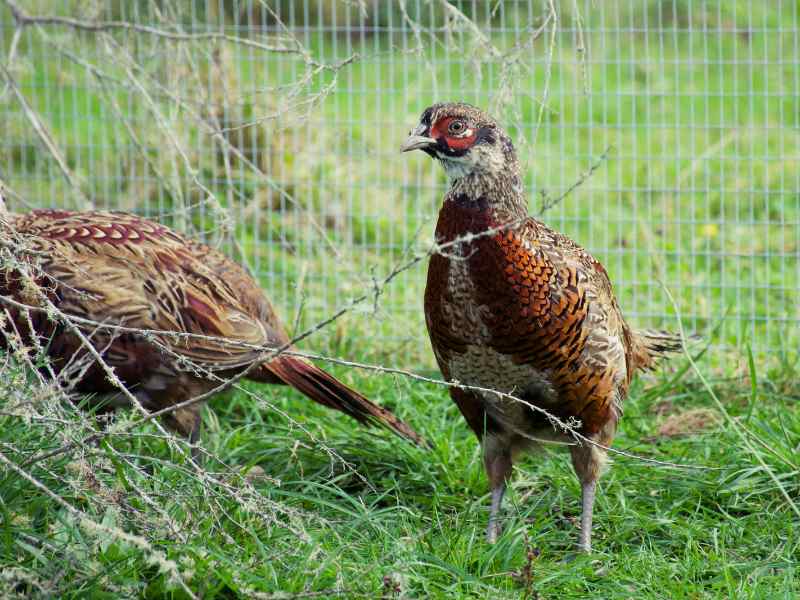
Space and Maintenance
Pheasants require a secure and spacious enclosure. They are more wild in nature than chickens and ducks, and they appreciate space to roam and express their natural behaviors. They are also strong fliers, so their enclosure should be fully enclosed to prevent escapes. A minimum of 20 to 25 square feet per bird is recommended for their outdoor run.
Their housing should protect them from the elements and predators. Pheasants require a roosting area off the ground and nesting boxes if you plan on hatching your own chicks.
Meat and Egg Production
Pheasants are most commonly raised for their meat, which is considered a delicacy. It is lean and gamey in flavor, offering a unique alternative to more traditional poultry meats. Breeds like the Ring-necked Pheasant are commonly raised for meat.
Pheasant hens will also lay eggs, but not as prolifically as chickens or ducks. If you’re primarily interested in egg production, pheasants might not be the best choice. However, their eggs can be collected and eaten, providing a unique product for your homestead.
Aesthetic Appeal
Pheasants are arguably one of the most visually striking birds you can raise. Their colorful plumage and elaborate courtship displays can add a unique and beautiful aspect to your homestead.
Noise and Social Considerations
Pheasants can be noisy, particularly during the breeding season. They are not typically recommended for very noise-sensitive areas. They are also social birds and should be kept in pairs or small groups for their well-being.
Pheasants can offer a unique option for urban homesteaders with their distinctive meat, eggs, and aesthetic appeal. However, they do have unique needs and characteristics that need to be understood and managed. With adequate space, secure housing, and an understanding of their needs, pheasants can be a successful addition to an urban homestead.
Pigeons
Although often overlooked, pigeons can serve as a viable option for urban livestock, given their adaptability to city environments. They have been raised for meat, known as squab, for thousands of years, and offer additional benefits such as fertilizing gardens and even serving as a hobby or sport in the form of pigeon racing.
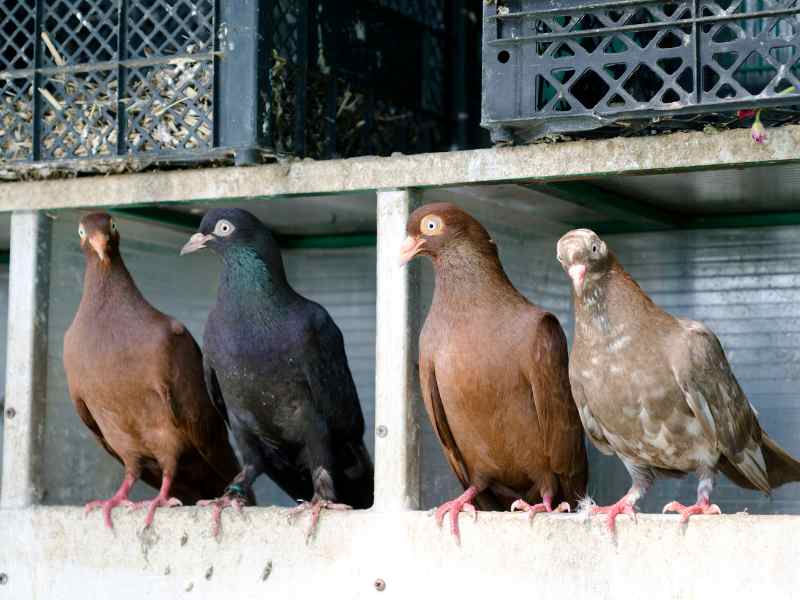
Space and Maintenance
Pigeons require significantly less space than many traditional livestock animals, making them suitable for urban homesteading. They can be housed in relatively small lofts or coops, which can be adapted to fit various urban settings such as rooftops or balconies. The coop should be secure to protect against predators and adverse weather conditions.
Pigeons do need a flight area, either inside the coop for smaller setups or in an external secured area. They also need nesting boxes within their housing. A key aspect of pigeon keeping is cleanliness. Regular cleaning of the pigeon loft is essential to maintain the health of the birds and prevent diseases.
Meat Production
One of the primary reasons for raising pigeons is squab production. Squab is a delicacy and is often considered a gourmet dish in many cultures. Pigeons reproduce rapidly, often raising several clutches of chicks, known as squabs, per year. Breeds like the White King are particularly bred for their meat.
Fertilizer
Pigeon droppings can be used as an excellent high-nitrogen fertilizer. Properly composted pigeon manure can be added to garden soil, contributing to plant nutrition and overall soil health.
Quiet and Adaptable
Pigeons are generally quiet, making them an excellent choice for urban settings where noise may be a concern. Moreover, they are highly adaptable to different environments and can thrive in the city conditions where other livestock may not.
Hobbies and Sport
Beyond meat production and fertilization, pigeons can also be raised for hobbies like pigeon racing or for their aesthetic qualities, such as in the case of fancy pigeon breeds. This adds an extra dimension to their appeal as urban livestock.
Pigeons can be an excellent choice for urban homesteaders due to their adaptability, efficient meat production, and low space requirements. Their quiet nature and unique appeal, spanning both culinary and hobbyist interests, make them a viable and versatile option for urban livestock.
Goats
Despite what you might think, goats can also be a part of an urban homestead, provided you have a little more space and time to devote to their care. They are versatile animals, known for their milk, meat, and their ability to clear vegetation.
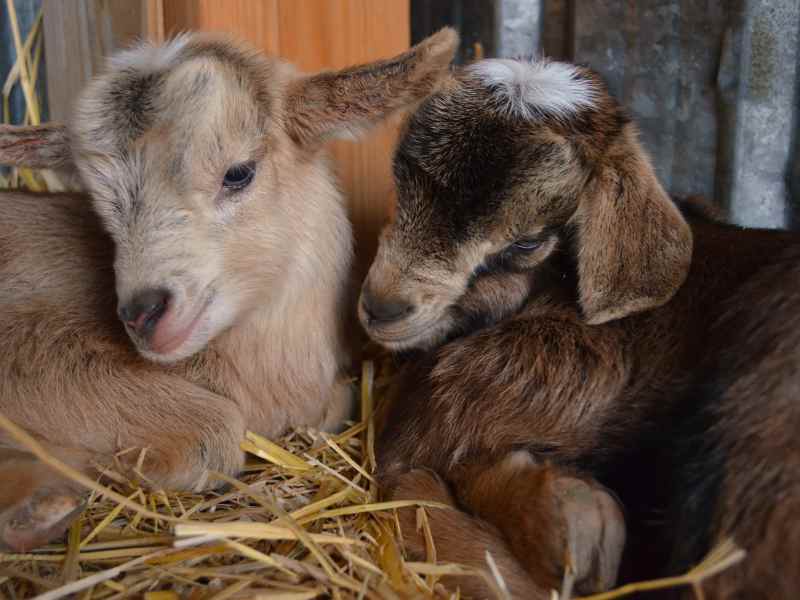
Space and Maintenance
Although smaller than many traditional livestock animals, goats do need a reasonable amount of space to move around and express their natural behavior. They also require sturdy fencing, as they are known to be escape artists. A general rule of thumb is that a minimum of 200 square feet is needed per goat, but more space is always better.
They require a shelter to protect them from the elements and a balanced diet, which can include grazing, supplementary hay, and grain as necessary.
Milk and Meat Production
Dairy goats, such as the Nigerian Dwarf or LaMancha breeds, can provide a reliable supply of fresh, nutritious milk. This milk can be used for drinking, cheese making, or even soap production.
Meat goats, like the Boer breed, are raised for their high-quality meat. However, goats are generally slower to mature than other small livestock like chickens or rabbits, so they may not be the first choice for those looking to rapidly produce meat.
Vegetation Management
One significant advantage of goats is their ability to manage vegetation. They are browsers rather than grazers, preferring to eat leaves, shrubs, and weeds rather than grass. This makes them excellent at clearing unwanted vegetation and can help reduce the risk of fire by removing fuel.
Noise and Social Considerations
Goats are social animals and should not be kept individually. A pair or small herd is usually recommended. They can also be quite noisy, especially during breeding season or feeding times, which should be a consideration in urban environments.
If you have a little more space and time, goats can be a great addition to an urban homestead. They can provide milk, meat, and vegetation management, making them a versatile choice. However, their needs in terms of space, social interaction, and potential noise should be considered carefully.
Bees
Bees, while not traditionally categorized as livestock, can be an integral part of an urban homestead. They play a critical role in pollinating plants, and their honey provides a sweet harvest. Beekeeping, also known as apiculture, has gained popularity in urban environments due to its relatively small space requirements and the multiple benefits that bees can bring.
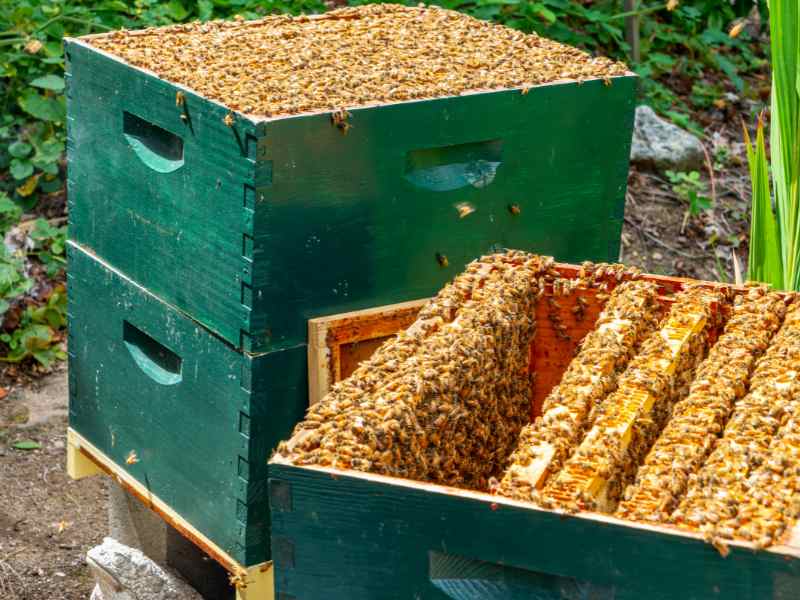
Space and Maintenance
One of the biggest advantages of beekeeping is that it requires very little space. Hives can be placed in a backyard, on a rooftop, or even on a balcony. Hives should be placed in an area with good sun exposure, away from high traffic areas to avoid disturbing the bees and reducing the risk of stings.
Beekeeping requires regular hive inspections to ensure the health of the colony, to check for pests and diseases, and to monitor honey production. However, it generally requires less time commitment than daily care for other types of livestock.
Honey Production
The most notable product from beekeeping is honey. A healthy hive can produce anywhere from 20 to 60 pounds of honey in a year, depending on the nectar flow and local conditions. Honey can be harvested in late summer or early fall, leaving enough reserves for the bees to survive the winter.
Pollination
Aside from honey production, bees play an invaluable role in pollinating plants. Having a hive on your property can increase the yield and health of your garden, as well as benefiting local biodiversity.
- Burns, David (Author)
- English (Publication Language)
- 170 Pages – 07/07/2020 (Publication Date) – Callisto (Publisher)
Last update on 2025-07-10 / Affiliate links / Images from Amazon Product Advertising API
Beeswax and Other Products
Beyond honey, bees also produce beeswax, which has numerous uses from candle-making to natural cosmetics. Other hive products include propolis, a resinous mixture used by bees to seal the hive, and royal jelly, a nutrient-rich substance produced by worker bees.
Local Regulations and Considerations
Before embarking on urban beekeeping, it’s important to check local regulations as some cities have specific rules regarding hive placement, number of hives, and registration requirements. Some people can be allergic to bee stings, so it’s important to consider the potential risk to neighbors and others who may come into contact with your bees.
Keeping bees on an urban homestead can offer a rewarding venture that benefits the local environment, boosts garden productivity, and yields sweet honey. While beekeeping does require a good understanding of bee biology and behavior, and a commitment to regular hive inspections, it can fit into the urban homestead with less space and time requirements compared to traditional livestock.
Worms
While often overlooked, worms are an excellent addition to any urban homestead due to their role in composting and soil health. Vermiculture, or worm farming, is the practice of keeping and breeding worms for the purpose of producing vermicompost, a rich and highly beneficial soil amendment. This is particularly beneficial in an urban setting, where improving soil quality can be a challenge.
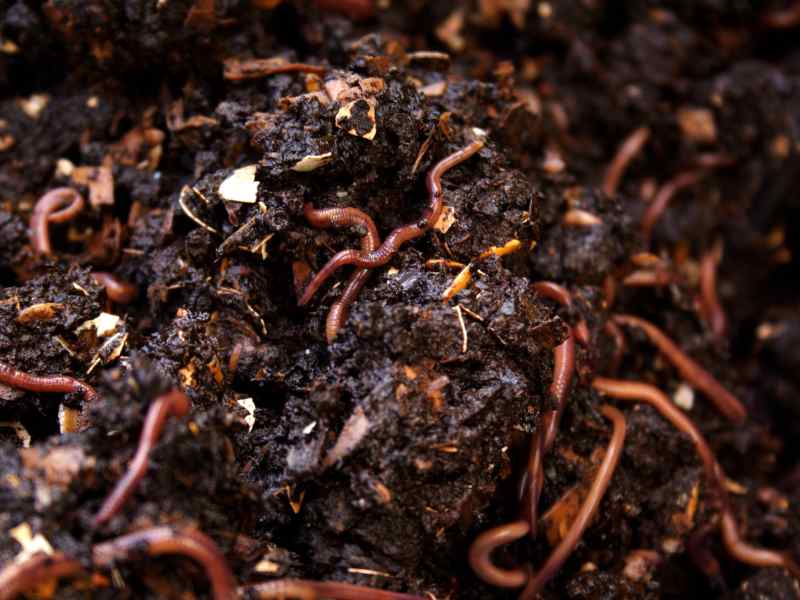
Space and Maintenance
One of the primary advantages of worm farming is that it requires very little space. Worm bins can be kept indoors or outdoors, depending on the climate and space availability. A well-maintained worm bin should not emit any unpleasant odors, making it suitable for even small apartments.
Worms require a balanced diet of organic materials. This typically includes fruit and vegetable scraps, coffee grounds, and shredded paper or cardboard. It’s essential to avoid feeding them materials like meat, dairy, and oily foods, which can create odors and attract pests.
Vermicompost Production
The primary product of worm farming is vermicompost, also known as worm castings. This nutrient-rich organic material is an excellent soil amendment that can help improve soil structure, increase water retention, and promote plant growth. Worms also produce a liquid byproduct known as “worm tea” that can be used as a liquid fertilizer.
Education and Engagement
Beyond their practical benefits, worms can serve as an educational tool, especially for children. They can help teach about ecosystems, recycling, and sustainable farming practices. They can also stimulate interest in gardening and the natural world, making them a valuable addition to the urban homestead.
- Customizable Tray Options for Versatile Composting: Worm Factory 360 offers 4…
- Durable and Space-Efficient Design: Made from high-quality plastic, the Worm…
- Simple and User-Friendly Setup: Easy assembly and operation with clear…
Last update on 2025-07-10 / Affiliate links / Images from Amazon Product Advertising API
Local Regulations and Considerations
As with other types of urban livestock, it’s important to check local regulations related to worm farming. While generally less regulated than other types of livestock, some areas may have rules related to composting and waste management that could impact your worm farming operations.
Worm farming is an excellent way to recycle organic waste, improve your garden’s soil, and engage with nature in an urban setting. While it may not produce the same kind of tangible products as other forms of livestock, the benefits of vermicomposting to an urban homestead are considerable.
Conclusion
Raising livestock on an urban homestead can be a rewarding experience that contributes to sustainability and self-sufficiency. However, it requires careful planning and consideration, including understanding local laws, managing space limitations, choosing appropriate livestock, and ensuring animal health and safety. With these considerations in mind, urban homesteaders can make informed decisions about whether or not raising livestock is right for their circumstances.





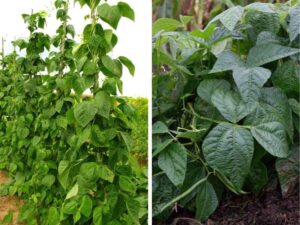

I am so glad you included bees and worms in this post. With one of the many worm composters available, keeping worms is very easy. I have built worm composters in the past, but this year I bought a Subpod and it is very easy to use. the only worry I have is if I can keep it going through the winter here in Missouri. Thanks for this post!